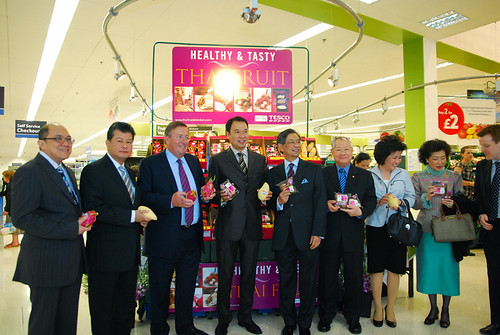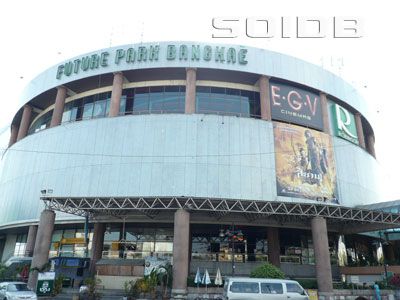
Back in early 2008, Sir Terry Leahy, the chief executive of Tesco (TSCDY), had a skiing accident that left him at home with six broken ribs and speaking, in the words of one colleague, like Darth Vader in Star Wars. But this period of convalescence did not stop him bombarding his team with email ideas about improving the grocer's performance.
Yesterday, Sir Terry – who joined Tesco in 1979 and has been its chief executive since 1997 – signalled that such days are numbered when he announced that he would retire in March 2011. Sir Terry, who will be 55 when he steps down, is passing the reins to Philip Clarke, the retailer's international director.
Often described as one of – if not the – most gifted retailer of his generation, Sir Terry leaves behind an impressive legacy for his fellow Liverpudlian Mr Clarke.
Today, Tesco is a global retail powerhouse which generated record group pre-tax profits up 10.1 per cent at £3.4bn in 2009-10, with operations in 14 countries including the UK, and a burgeoning general merchandise and services division providing telecoms to credit cards.
Yesterday, Sir Terry, a fervent supporter of Everton Football Club, said: "It is important as a CEO to know when is the right time to go, and when I came into this job 14 years ago I had a plan. That plan was to become number one in the UK and to use that strong platform then to go into long-term growth opportunities in non-food, services, and international expansion."
Clive Black, an analyst at Shore Capital, said: "His biggest and greatest achievement has been extending the Tesco brand from one that sells bread and baked beans into one capable of selling practically any goods and services in just about any country in the world."
With group sales of £62.54bn ($90bn), Tesco is the world's third-biggest retailer by sales, trailing only behind Wal-Mart (WMT) and Carrefour (CRERY), although Tesco is tipped to leapfrog the French giant Carrefour into second place in 2012.
However, not everything that Tesco has touched over the past 30 years has turned to gold. Most recently, it has had its fair share of troubles in the US after launching its Fresh & Easy stores in November 2007. Losses in America, where it now has about 150 shops, hit £165m in the last financial year, but Sir Terry insisted they had peaked.
Tesco also had brief excursions into France in the early 1990s and Taiwan in 2000, but soon departed after realising it could not deliver sufficient scale in these markets.
Tesco typically aims to become the biggest or number two in new territories and currently is the market leader in six of the 14 countries where it operates, including Hungary, Thailand and the UK.
Under Sir Terry, the overall story of Tesco has been one of relentless expansion into new territories as well as its products and services. Bryan Roberts, the global research director at Planet Retail, said: "Its Clubcard, Tesco.com and multi-format strategy are world-leading. Its private label strategy is envied and has been much mimicked by many retailers around the world."
While some of the drivers behind Tesco's growth (such as its Clubcard loyalty scheme, launched in 1995) predated Sir Terry taking the helm, he has been behind many of its most inspired decisions since then.
In the UK – which still accounts for 70 per cent of its group trading profits – Tesco took an aggressive approach to property development during the late 1990s and over the past decade, when until recently Asda and Sainsbury's (JSAIY) were asleep on the job. Tesco overtook Sainsbury's as the leader in the British grocery market in 1995.
"It was all about Sir Terry's quest for market share," says a source. This is a key reason why Tesco's share of the grocery market today stands at 30.6 per cent, compared to Asda's 16.8 per cent and Sainsbury's 16.3 per cent.
As part of its expansion into convenience stores, Tesco acquired T&S, the operator of the One Stop shops, for £325m in 2003. While 450 of the shops were converted into Tesco Express outlets, Tesco still runs 520 One Stop outlets. In fact, its development of four Tesco formats in the UK – Express, Metro, Superstore and Extra – has been a key foundation for its international strategy.
Of its 13 forays overseas, South Korea and China are two countries that could start to move the dial for the group over the coming years. Greg Lawless, an analyst at Collins Stewart, said yesterday: "Asia is starting to become the engine room for growth overseas, with South Korea at the forefront and China in the future. International is starting to come of age."
South Korea is already Tesco's largest international business, with sales of £4.5bn and profits just shy of £300m, boosted by its acquisition of the Homever chain in May 2008.
In China, where it has more than 90 branches, Tesco is also cranking up its growth by opening 8.5m sq ft of new space, in addition to nine shopping malls this financial year.
Closer to home, Sir Terry oversaw an aggressive response to Tesco's UK underlying sales trailing behind those of Asda, Sainsbury's and Morrisons (MRWSY) in the first half of 2009. Tesco fought back with a £550m investment in its loyalty scheme, notably the launch of Double Clubcards last August, which brought it back into the pack.
Along the way, Sir Terry has become very rich. In the year to 27 February alone, he took home a salary of £1.4m, as well as "performance-related emoluments" of £3.7m and benefits of £115,000.
Yesterday, Sir Terry remained tight-lipped about his plans after he leaves next March but said he would focus on his "private investment interests" and hinted that he would not take up a government role.
Asked about his achievements, he added: "We have secured long-term growth for Tesco – that is the most exciting thing. Every chief executive gets up in the morning wondering where the growth will come from and I think we have answered that question for Tesco."
With typical Liverpudlian modesty, he added: "I've had a good innings."
The new man in charge
The timing of Philip Clarke being anointed as chief executive of Tesco surprised the grocery world.
But the fact that he will be the new leader of the world's third largest retailer from next year did not. This is partly as Mr Clarke has risen through the ranks at Tesco after first joining in 1974 as a part-time assistant. He rejoined on a management trainee scheme after studying economics at Liverpool University.
But his appointment is largely due to his experience expanding Tesco overseas. Mr Clarke, 50, took over responsibility for international operations in 2004, although he retained an IT remit. He has been a driving force behind its entry into China and its growth, including an acquisition, in South Korea. Greg Lawless, an analyst at Collins Stewart, said: "He has been running the whole of the international business so when you look at it, he is the logical choice. It should be a pretty small transition."
What surprised the market was that Sir Terry has a long-term bonus package tied to the performance of its US business, Fresh & Easy, which industry observers thought would keep him at Tesco until closer to 2014.
The Tesco which Mr Clarke, a Liverpool-supporting father of two, will lead from next March is very different to that which Sir Terry started running in 1997. The retailer now operates in 14 countries and has a massive non-food business that delivered group sales of £13.1bn last year, as well as a rapidly growing services division that will launch bank accounts over the next year. For this reason, Tesco yesterday unveiled wide-ranging board changes, including Tim Mason, the chief executive of Fresh & Easy, also becoming deputy chief executive, and its commercial director Richard Brasher taking the new role of UK chief executive.
Dave McCarthy, an analyst at Evolution Securites, said: "Philip Clarke has to deal with the UK business being more mature and with finding a new engine. There are other issues, such as the losses in the US, and Tesco's UK competitors are stronger than they have been for 15 years."
Yesterday, Mr Clarke, who is known as an energetic, ambitious and determined character, said: "I feel blessed that the team is so strong – not only my board colleagues, executive and non-executive, but also the 480,000 people the length and breadth of Tesco worldwide. I feel the weight of that responsibility but I also feel an appetite and ambition for the future development of Tesco."
But he has big boots to fill. Andrew Kasoulis, an analyst at Credit Suisse, said: "Although Leahy is a very tough act to follow, Clarke is a more than worthy successor in our view."





